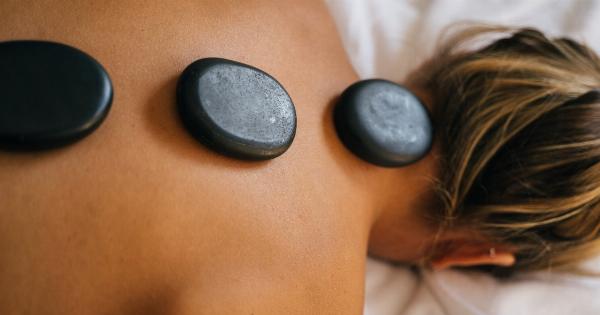Ankle sprains are a common injury that can happen to anyone, whether you’re an athlete or not. They occur when the ligaments around the ankle are stretched or torn, usually due to a sudden twist or turn of the foot.
Ankle sprains can be painful and debilitating, making it difficult to walk or engage in any physical activity. One question that often arises when dealing with an ankle sprain is whether to use ice as a remedy or not.
What is an Ankle Sprain?
Before we delve into the debate of ice or no ice for ankle sprains, let’s understand what exactly happens when you sprain your ankle. The ankle joint is supported and stabilized by several ligaments, which are bands of connective tissue.
When these ligaments are overstretched or torn, it results in an ankle sprain. Sprains are classified into three grades:.
Grade 1 Sprain:
This is a mild sprain where the ligaments are only slightly stretched.
Grade 2 Sprain:
A moderate sprain where the ligaments are partially torn.
Grade 3 Sprain:
A severe sprain where the ligaments are completely torn or ruptured.
The Role of Ice in Ankle Sprain
Ice, also known as cryotherapy, is a commonly used remedy for various injuries, including ankle sprains. When applied to the affected area, ice helps in reducing pain, inflammation, and swelling.
Ice works by constricting the blood vessels, which in turn reduces blood flow to the injured area. This vasoconstriction helps in limiting the accumulation of fluid and inflammatory cells, thereby reducing swelling.
Ice or No Ice: Arguments For and Against
Arguments for Using Ice
1. Pain Relief:
Ice can provide temporary pain relief by numbing the affected area. It helps in dulling the pain signals from the injury site, allowing you to move and perform rehabilitation exercises with greater ease.
2. Reduces Inflammation:
By constricting the blood vessels and limiting blood flow, ice helps in reducing inflammation. Controlling inflammation is crucial during the initial stages of an ankle sprain to prevent further damage and promote healing.
3. Limits Swelling:
Icing your ankle can help limit the swelling that typically occurs after an ankle sprain. Swelling not only causes discomfort but also restricts movement.
Ice can be particularly useful in reducing swelling when applied immediately after the injury, during the acute phase.
Arguments Against Using Ice
1. Delayed Healing:
Some experts argue that ice might delay the healing process. While ice helps manage pain and inflammation, it may also impede the body’s natural healing response.
They believe that inflammation is a crucial part of the healing process and that by dampening it too much, ice may hinder tissue repair.
2. Potential Tissue Damage:
The application of ice directly on the skin for prolonged periods can result in tissue damage, especially if not used correctly. Ice burns and frostbite are potential risks associated with improper ice application.
3. Limited Evidence:
There is limited scientific evidence to conclusively prove the effectiveness of icing in ankle sprains. While many swear by the benefits of ice, some studies suggest that it may have minimal impact on swelling or healing time.
So, What’s the Verdict?
Considering both arguments, it becomes difficult to come to a definitive conclusion regarding the use of ice for ankle sprains. The decision ultimately depends on individual preferences, pain tolerance, and the severity of the sprain.
Here are a few general guidelines to help you make an informed decision:.
1. Ice for the First 48-72 Hours:
During the initial 48-72 hours after the injury, when swelling and inflammation are at their peak, ice can be beneficial.
Applying ice for 15-20 minutes every 2-3 hours, while ensuring proper insulation between the ice pack and the skin, can help manage pain and reduce swelling.
2. Heat Application After 72 Hours:
Once the initial swelling subsides, some might find heat therapy more beneficial. Heat helps in improving blood circulation, relaxing muscles, and promoting healing.
However, it’s essential to avoid applying heat immediately after the injury, as it may exacerbate inflammation.
3. Alternating Ice and Heat:
Switching between ice and heat therapy can also be an effective approach. The cold therapy helps in reducing inflammation, while the heat therapy aids in relaxation and blood flow. Alternating between the two can provide the benefits of both remedies.
4. Seek Professional Advice:
If you’re unsure about whether to use ice or not, consider consulting a healthcare professional. They can assess the severity of your sprain and provide personalized recommendations for effective treatment.
Conclusion
Ankle sprains can be painful and disruptive, but with proper care and treatment, you can recover effectively. While the use of ice for ankle sprains has been a popular practice, the decision ultimately rests on personal preference.
Ice can help in pain relief, reducing inflammation, and limiting swelling, especially in the initial stages of the injury. However, it’s essential to use ice safely and avoid prolonged application to prevent potential tissue damage. Consulting a healthcare professional can provide you with tailored advice for your specific condition, ensuring optimal recovery.
























